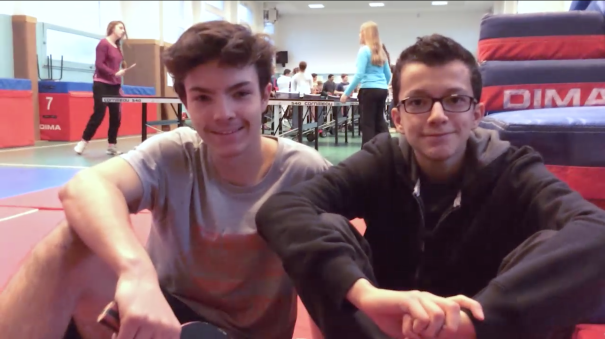Putting yourself in restricted or full-on situations in order to confront and manage them emotional) (cognitive and
Organising players into a themed game
Some examples of possible themes:
Serves/returns
Spaces to aim for/avoid (target zones)
Strategies (overwhelm, finish, force errors)
Types of stroke
Handicap
Max/min number of strokes...
These games have rules that need to be discovered in order to win.
Therefore, the students play to:
Discover the winning rule (solo or in a group)
Understand why that works or why that doesn't work
Implement the rule
Organising themselves according to their strong/weak points (Technical, Decision-making and Management planning).
Now it is up to you to find the theme of this game.
Here, it's all about playing accurately, with set positions
And here?
The advantage during service...
Taking advantage of your opponent's choice...
It is often useful to go over the training sessions at the end in order to find out:
What the students think and feel about their training,
Their understanding of the instructions and objectives.

The main scores used are:
7-7: mid-set, level scores
9-7: advantage near the end of the set
7-9: behind near the end of the set
9-9: level scores, 2 serves from the end
10-10: level scores, 1 serve from the end
Possession of serve can change the momentum of the game It may be useful to give or receive advice here. This is one of several social roles you can play in table tennis (See N4.4 Complex situation)
Are the umpires here no more than ball-boys? How can they participate in order to learn (role)?
In these situations, where the score changes quickly, control of your emotions is a deciding factor, especially as the skill required is high and confidence may be wavering. The impact of this is significant on decision-making.
The difficulties and direct or indirect effects are multiple:
Managing your confidence in your play
Fear of failure
Fear of losing
Concentration focused by the stakes
Difficulty overcoming the pressure of the score line
Becoming aware of not mastering your own movements, and the consequences
Poorly adapted decisions
Good decisions not made by not being able to handle the moment
Motor skill difficulties (precise adjustment required)
Emotions (fear of not succeeding)
Difficulty concentrating
Difficulty stabilising your emotions
Over-excitement
Loss of energy
Loss of focus
Advice from the coach
Written instructions are useless here, as the individual must build his or her character through experience.
Useful attitudes for mental discipline appear:
Taking the time to get ready
Remaining focused
Understanding your reactions, especially if they happen repeatedly.
The different disciplines within table tennis (singles, doubles,
team) promote a variety of different ways to engage with
others. These are the perfect opportunities to experience new
things and grow as a player.
Situation
The 7-14-21 match promotes solidarity between members of a team.
The order of singles and doubles matches enables each player to take part in the event.
Let's watch a match, starting with the boys.
What advice would you have given?
Following the girls' match, keep score.
Some advice during the time-out requested (this is included in the official table tennis rules, 1 minute per match)?
Before the deciding doubles match, always remain positive and focused in order to ensure that the specific rules for each type of play are absorbed properly.
So, are you ready to try this out?
Testing yourself to become an effective player
Whether there is a prize at stake or not, the different types of play allow for matches between students and are a good opportunity to put their newly acquired skills to the test.
Matches between girls
Matches between boys
Mixed matches, allowed for by the activity, enabling the students to rally
Throughout the matches, the players' styles of play are being constructed, their styles and tactics are improving and their progress is visible.
Let's watch how they manage their opportunities to smash in more or less favourable situations.
In match 1, we can see a number of faults but also a desire, an intention to score points according to a certain strategy with certain types of smashes. It seems that they just haven't quite adjusted properly to it.
Let's watch a match a few days later.
In match 2, we can see some clear progress with one of the attackers, who has learned to stabilise his first attacks.
It is also possible to set up collective organisations, with movement from table to table (columns of tables).
Different ways of organising this are possible: below, a single table plays and a race or “juggling” activity can be set up in the rest of the space.
It is also useful to vary how the games are played, whether as singles or doubles.
In singles... where you alone decide and play
In doubles too... here, you need to coordinate your actions into a single strategy and learn to play together in a confined space, as the rules of table tennis oblige you to take turns to hit the ball.





